17 years on, Persona 3 Reload: Episode Aigis is a faithful remake that does little to save the expansion from its black sheep reputation
Aigis in the hot seat.
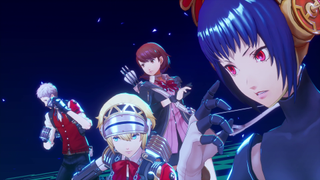
If you're a Persona old hand, let me save you some time. Based on my hour playing it, Persona 3 Reload: Episode Aigis is an exactingly faithful recreation of Persona 3: FES's The Answer expansion from 2007 in the remake's souped-up engine. That means a lot of combat with the new mechanics you've come to rely on in Reload—theurgies, shifting, being able to actually control your party—all grafted onto a structure and narrative nearly, nearly identical to the original add-on.
If you've already played that original add-on, you almost certainly know whether that appeals or not. Fare thee well, reader, you can stop here.
But if all this post-game stuff is brand new to you? Here's what my time with the DLC was like, and why I'm not sure that Reload's whizzbang new combat mechanics and prettier graphics are going to be quite enough to save the expansion from the black sheep reputation it's endured for the last 17 years. Spoilers ahead for the ending of Persona 3 Reload.
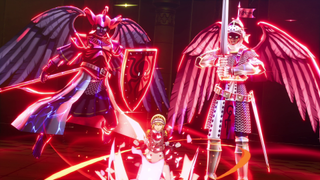
Memento mori, Mrs Roboto
Whether you call him Makoto Yuki, Minato Arisato, or Charlie Tunoku Sr, Persona 3's protagonist is dead. Donezo. Wasted. After saving the world, he went to sleep and never woke up, right there in the lap of his robot pal/protector/partner Aigis at the end of the game.
So you don't play him anymore. You play Aigis, who has conveniently gone and inherited the previous protagonist's ability to swap between personas at will. She's no longer a purely physical powerhouse: Just like the last guy (and those to follow in Persona 4 and 5), she can snap between being a glass cannon magic user, a cure-slinging healer, or a total physical tank, alongside anything and everything in-between.
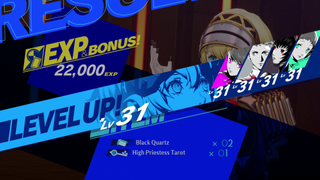
She's also lost her theurgies from the base game—like the ultra-physical Orgia Mode that does a load of damage but puts her mostly out of action for a few turns—because she now has access to the list of possible "protagonist" theurgies instead. It meant that I never felt like I was playing anything but a texture-swapped Makoto Yuki in my time with the game. All my strategies and tactics from the base experience were the same.
In fact, the biggest difference between the base game's combat and the DLC's is how you start it. Where Makoto was a melee guy—you ran up behind shadows and whacked them with your sword to start combat—Aigis has guns for hands. Starting fights with advantage now means letting auto-target pick out a shadow at short range and blasting them, or else firing bullets in a kind of short-distance semi-circle and hoping to catch a foe in the killzone.
The biggest gaming news, reviews and hardware deals
Keep up to date with the most important stories and the best deals, as picked by the PC Gamer team.
Once the fight begins? I'm cycling through damage types trying to pinpoint a weakness just like I've been doing in these games for years
Once the fight begins? I'm cycling through damage types trying to pinpoint a weakness just like I've been doing in these games for years. The difficulty is comparable to base Persona 3 Reload, which might come as a relief. The original 2007 version of this content is a tad infamous for the difficulty spike it presented—made all the harder by the fact you couldn't control your party directly in the original PS2 game. That's no problem here. With 70+ hours in P3R, I had no problem breezing through nearly every fight in Episode Aigis' opening hour, with only the extra-powerful red shadows and bossfights providing even a hint of a challenge on normal difficulty.
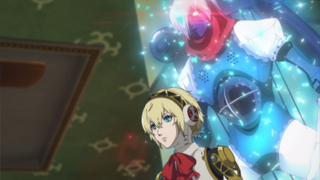
Plus, there are remixed combat tracks, including another powerful new rendition of Mass Destruction, and that's enough all by itself to get me very excited.
Sister act
Fret not, you haven't lost access to Aigis' abilities (which pretty much carried me through the base game's final hours). They've just been cut and pasted over to the DLC's new party member: Metis. Like Aigis, Metis is a shadow-hunting robot with a mandate to protect a single individual, but where Aigis was charged with protecting Persona 3's protagonist, Metis' ward is Aigis herself, whom she sees as a beloved big sister figure.
Which is a bit of an issue. Episode Aigis kicks off with the squad understandably upset about Makoto Yuki's death, morosely packing away their things in the dormitory and trying to figure out how to fit a friend's death into their hearts. They're rudely interrupted when Metis crashes through and tries to murder them all. Someone's done a Groundhog Day, you see—they've trapped the crew in an infinitely repeating March 31, and Metis thinks the way to stop it is to put everyone bar Aigis in the dirt.
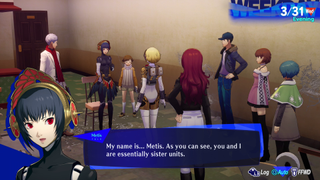
Aigis stops her via combat tutorial, and it soon becomes clear that the cause of the problem is some kind of dungeon beneath the dorm living room. Just as you progressed all the way up through several hundred floors of Tartarus in the main game, your goal now is to take the party down into the depths of this new place, figure out Metis' whole deal, and maybe even come to understand just what happened to the protagonist at the end of P3R.
Which is, of course, exactly the plot of the add-on from 2007. That's not a surprise and it's not a disappointment—I would have been upset if we hadn't gotten this add-on in some form for Reload—but it does mean it comes with a lot of the baggage that rubbed some people the wrong way all those years ago.

For instance, unlike Makoto, Aigis is an actual character with a voice actor and a pre-defined personality (okay, yes, Makoto's personality comes out through the dialogue options, but he's not exactly multi-layered). That means she was far chattier in the big group discussion that took up the first 20 minutes or so of my demo, but it also means you get less room to define her. There are a few dialogue options, yeah, but Aigis is Aigis, and the bulk of her conversation is voiced, predetermined lines. The Persona games' narrative sections have never been hyper-interactive, but you really do just sit back and take it all in for long stretches at a time in Episode Aigis.
Fighting words
It also means that—so far as I can tell from my time with it—Episode Aigis is almost entirely about the fighting. There's narrative cutscenes, sure, and you can run about and get a couple of lines out of each of your party members before you dungeon delve, but I didn't see any sign of the social side of the Persona series. I wasn't buffing Aigis' social stats, doing exams at school, or—the big one—starting social links.
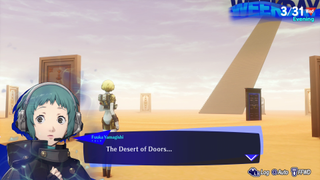
Again, that'd be in-keeping with the original expansion, but it's not really what people come to these games for. Now, it does seem like Atlus is saying it's chucking in a few "linked episodes"—the company's term for the pseudo-social links they added for characters like Junpei and Akihiko in P3R—but based on my time with it, you're still gonna be doing a lot of fighting interspersed by a few cutscenes where you have very little input.
Honestly? It just about works for me. Atlus has strived hard to stay faithful to the original game across all of Reload, and I didn't expect it to ditch that philosophy here. It'll be good to get a complete—mostly complete, I'm still sad about the absent female protagonist—version of this game in a swish modern package. Just don't expect it to rectify the sins of the original.

One of Josh's first memories is of playing Quake 2 on the family computer when he was much too young to be doing that, and he's been irreparably game-brained ever since. His writing has been featured in Vice, Fanbyte, and the Financial Times. He'll play pretty much anything, and has written far too much on everything from visual novels to Assassin's Creed. His most profound loves are for CRPGs, immersive sims, and any game whose ambition outstrips its budget. He thinks you're all far too mean about Deus Ex: Invisible War.
Most Popular


